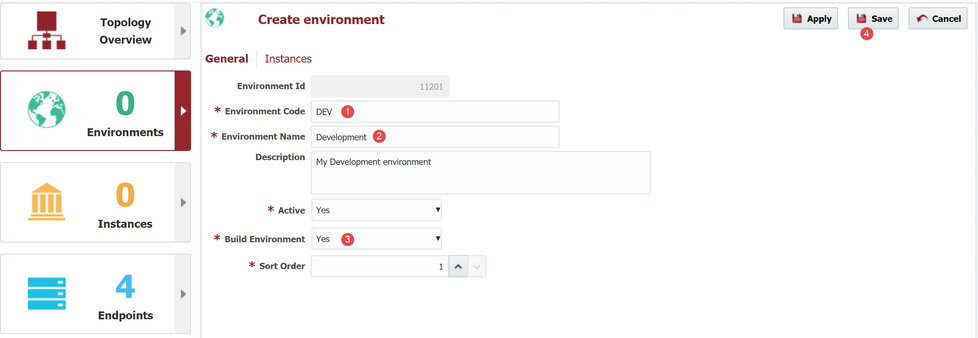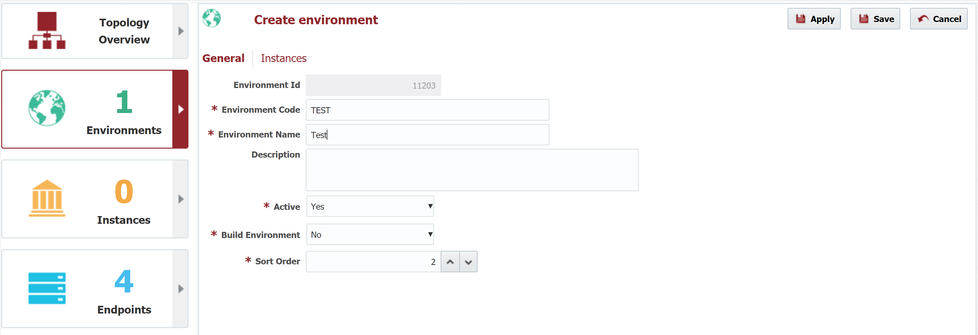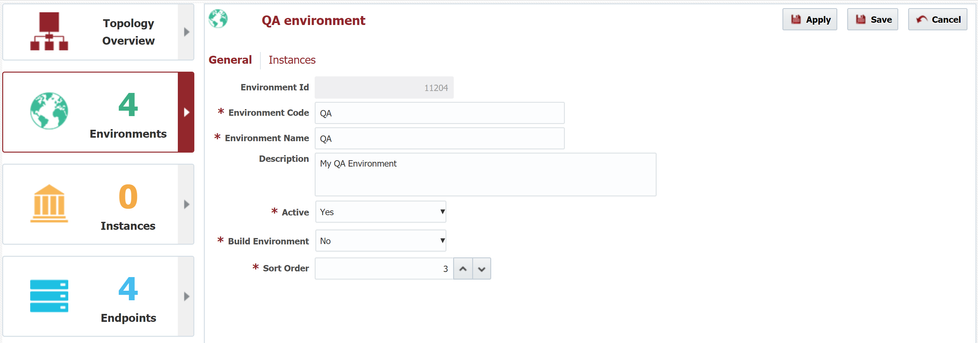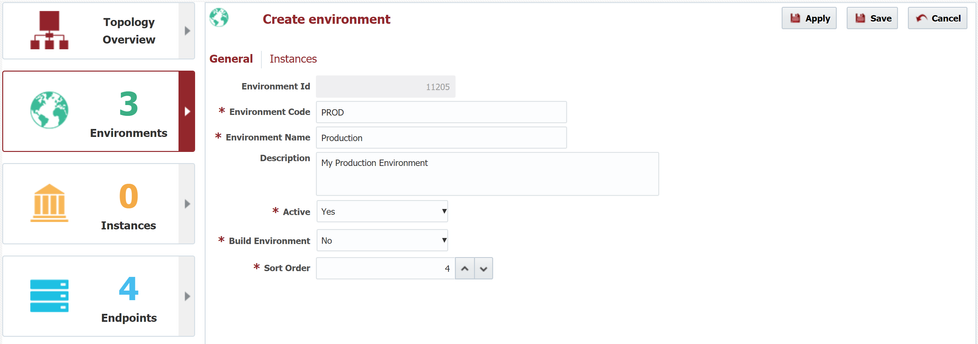At the completion of this section, you will:
- understand the use of environments in the deployment process
- be able to create/modify an environment
An Environment is a logical name given to a group of servers, applications, and technologies which work together to provide a software solution for the purpose of development, testing, or a production implementation. Typical Environments include, but are not limited to, Development (DEV), System Integration Testing (SIT), User Acceptance Testing (UAT), and Production (PROD).
For this tutorial we will create four environments - DevDevelopment, Test, QA, and Production. These environments host our physical EBS installations for our logical global EBS instance.
...
Click on the + in the upper right corner to create and configure a new Environmentnew Environment. Configure the following:
- environment code
- environment name
- build environment, this indicates whether this environment will appear in the drop down during the build execution.
For the SOA Suite build, a SOA Suite installation is required because the build utilizes installed libraries and files. Instead of having a seperate SOA Suite installation in a BUILD environment, we will utilize the DEV environment as both a BUILD and DEV environment. This is accomplish by changing the Build Environment dropdown to Yes.
We will create two additional Environments for QA and PROD so we can deploy to multiple environments. The Build Environment drop down should be No for these Environments, otherwise these Environments will appear in the drop down during build execution.
Enter the following required fields for the new environment, and click Save to apply your changes.
Field | Description | ||
|---|---|---|---|
| Environment Code | A descriptive name for the environment. | ||
| Environment Name | A technical code, without any spaces. The codes are available as variables to shell and Groovy scripts, and therefore needs to comply with their limitations. | ||
| Build Environment | Whether or not this environment is available as a build environment.
|
First we will create our Development environment (as a Build Environment).
And next we will repeat the steps above for Test, QA, and Production (with Build Environment set to "No").
We now have one build environment and three deployment environments.
After creating these, the Environment screen should look like this.
| Completed 5 of 10 Sections | Continue to Environment Instance Configuration | Back to Instance Creation |
|---|
...








